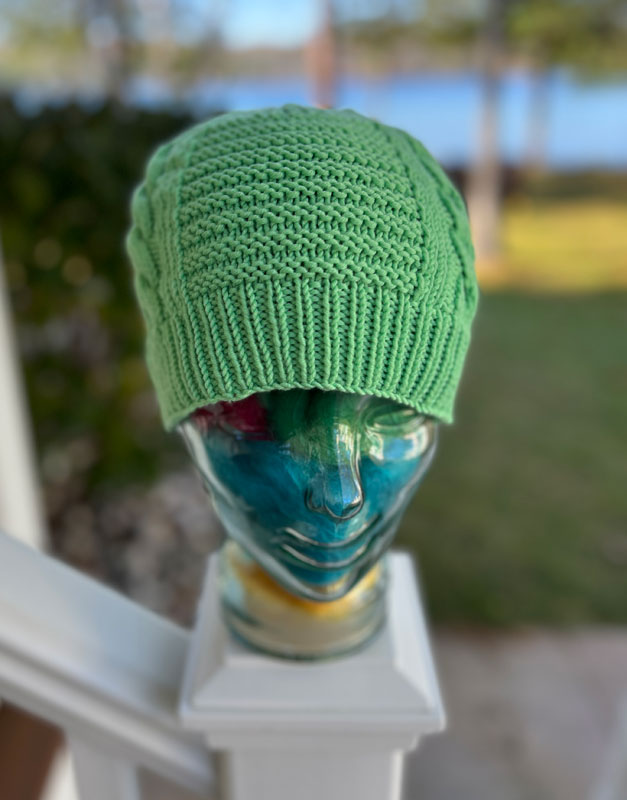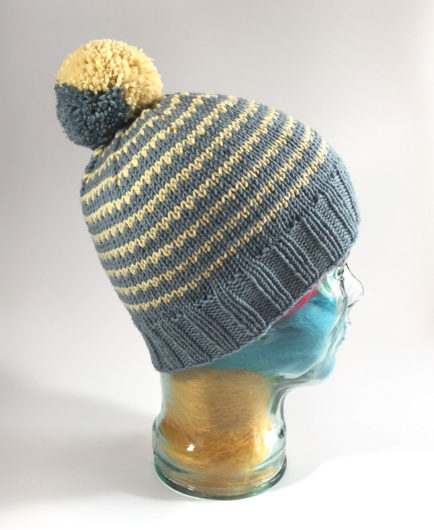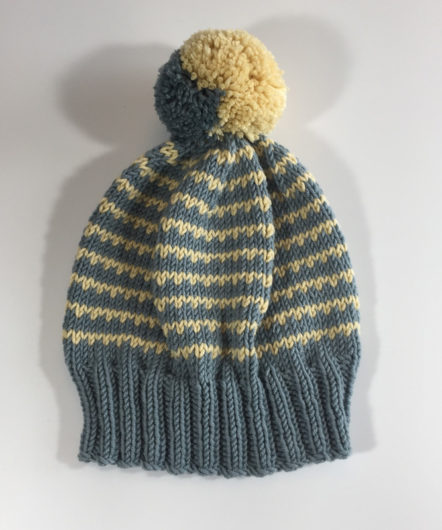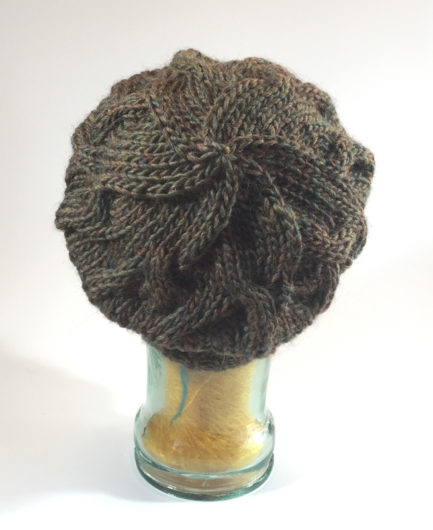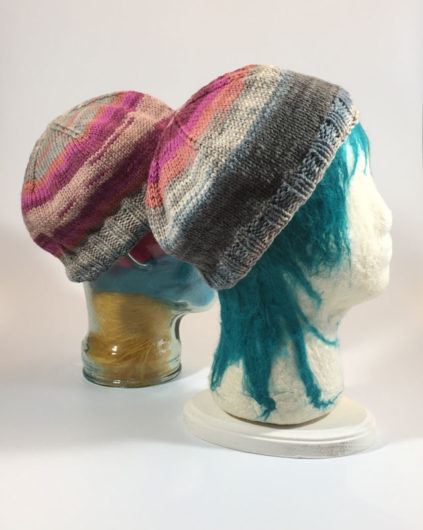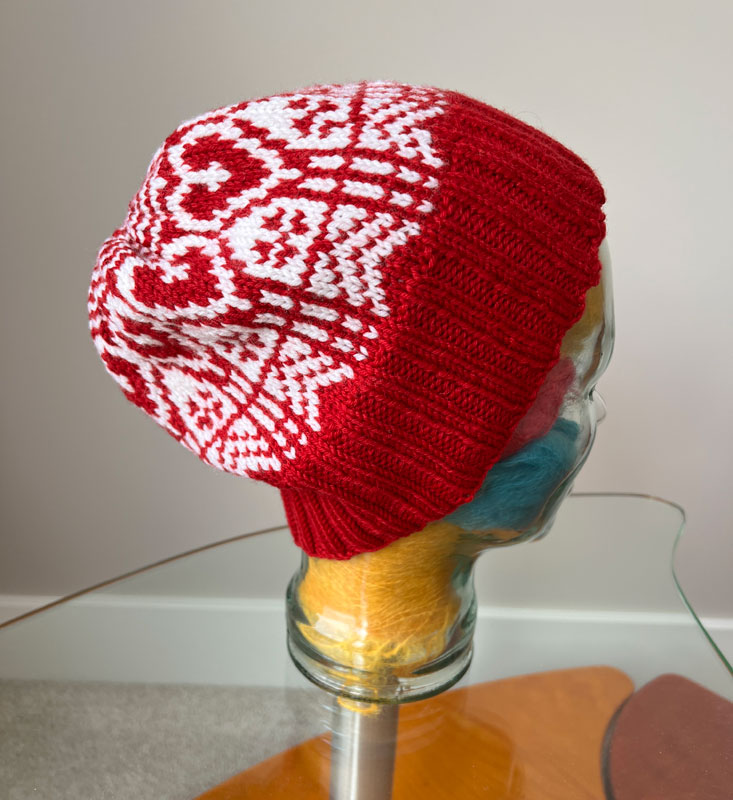
This is Faye Kennington’s fun “Off With Her Head” design. She writes that “The hearts and flouncy garden trellis motif of this hat have an ‘Alice in Wonderland’ quality to them.” Indeed they do. My Glass Head shudders to think of Iracebeth’s a/k/a the Queen of Hearts uttering her famous cruel phrase. Maybe it brings up old memories from the glass factory? Anyway, the hat does have an Alice in Wonderland look going.
And somehow this hat also conjures up a much less threatening Valentine’s Day vibe. I knit mine in Berroco Ultra Wool Worsted. The yarn is a sturdy superwool that’s skeined up in a huge variety of colorways including many solid shades.
The pattern is wonderfully clear. The fair isle chart didn’t even need magnifying to make it a comfy-on-the-eyeballs knit. It was almost completely clear of longer floats. That’s definitely a plus in fair isle work.
I followed the pattern precisely, including working the ribbing for 3.25 inches. If I knit it again I believe I’ll either shorten or lengthen the ribbing because the hat’s a tad awkward to wear. The ribbing is too short to fold over nicely. But with the ribbing unfolded the hat lengthens into more of a slouchy than I prefer. Still, an excellent pattern. And a fun knit!

The position of the hearts just before the crown decreases begin is a great look.
Next up, red socks.
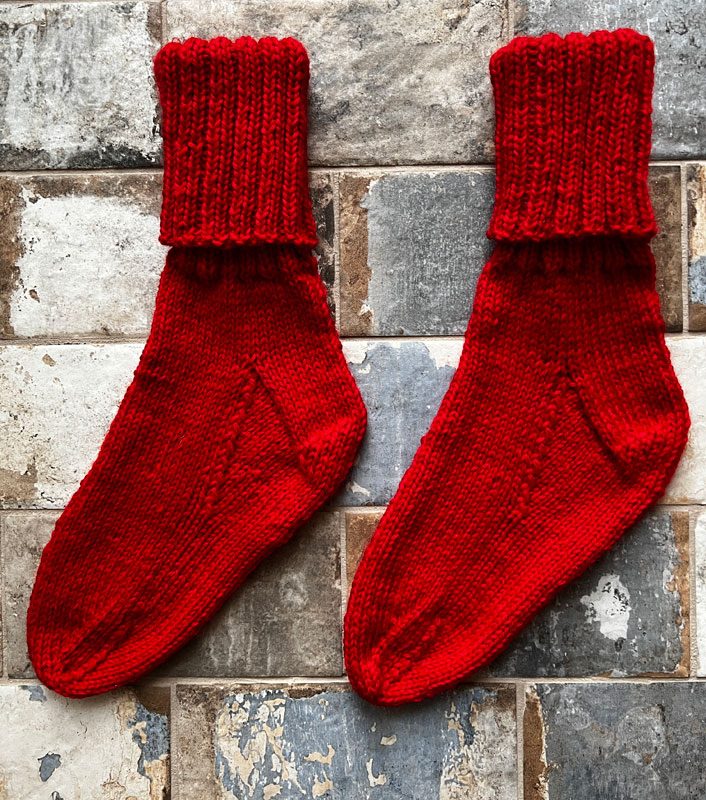
These are Carol A. Anderson’s Iowa Crew/Cruise Socks. Mine are knit in a new-to-me yarn, Raggen by Viking of Norway. It’s another sturdy worsted in 70% wool 30% nylon. Steve’s pair has machine washed well–absolutely no felting.
Anderson’s been at the helm of Cottage Creations for a month of Sundays. Her booklets have been digitized and are now available on Ravelry. The pre-printed booklets are also still available through the Cottage Creations website and at many local yarn shops.
If you need a warm pair of boot socks or bed socks, this fits the bill. The pattern is written for all size feet. As with all Anderson’s patterns, she holds a knitter’s hands in a tight grip throughout the knit. The patterns are wordy and folksy. They make for a good read as well as a good knit.
Back to hats. This next one is Susan Villas Lewis’s Breck knit in sportweight Debbie Bliss Baby Cashmerino. This my fourth Breck. You’ll find the others here and here. I haven’t yet found a color combination that doesn’t work.
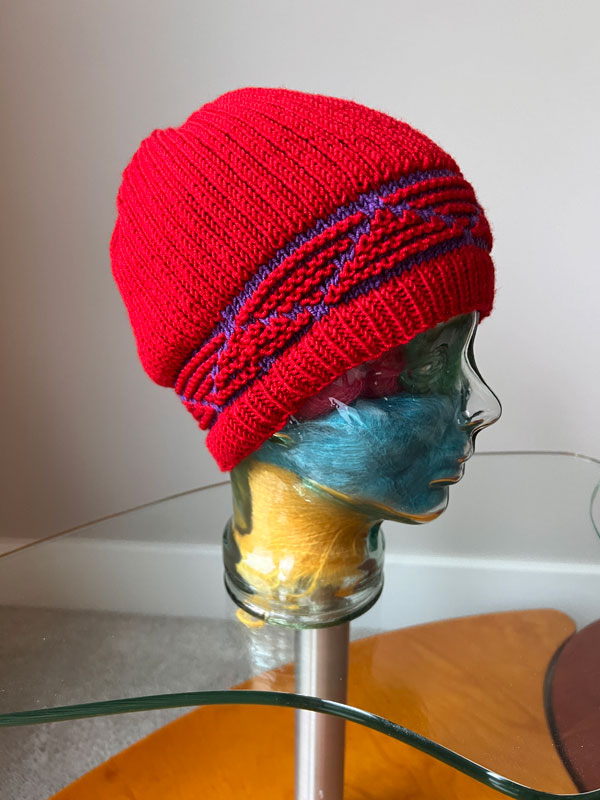
The simple slip stitch work has always been very effective for me. Go for the high contrast is my only advice. My sense is that it’s the mix of stockinette and garter that makes this hat stand out from the crowd. And the knit 2, purl 1 relaxed ribbing throughout the body is a great touch too.
The crown decreases are simple. But they work. It doesn’t bother me that the ribbing first changes to 1 by 1 and then to stockinette as the crown stitches draw closer together.
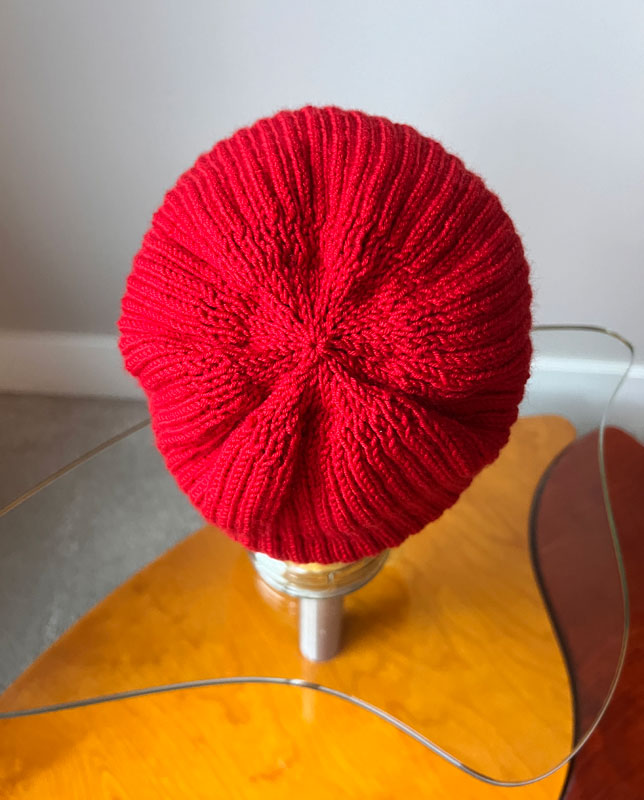
Breck is a seriously excellent pattern. Give it a try, especially since DK weight seems to be squeezing the sportweight yarns off the shelf. I’m finding sportweight somewhat over-represented in the sale shelfs of my local yarn shops.
Whether it’s Valentine’s or Galentine’s or Palentine’s …or even just another Wednes Day…have a great 14th!


